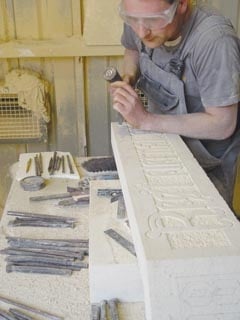Report : Traditional masonry skills
Few aspects of construction attract such favourable attention from the public as traditionally detailed stonework. It inspires the same awe and admiration today as it has over the millennia.
On 30 November those who have been involved in the design and construction of some of the finest buildings in the country will come together at Lord's Cricket Ground in London to celebrate the winners of the 16th biennial Natural Stone Awards.
The judges are currently visiting those entries that have been short-listed for an Award. They will be considering the design element, both from an aesthetic point of view and the practical considerations of detailing such as water shedding, as well as the quality of the work that has translated the design into a finished structure.
There is one category in the Awards that recognises the skills of the stonemason more than any other. That category is ‘Craftsmanship’, which specifically identifies and rewards the traditional skills of the stonemason of laying out, working on the banker and fixing on site.
While we wait for the results of the judges’ deliberations to be revealed in November, Natural Stone Specialist takes a look at some of the traditional skills of the stonemason, including some of the outstanding work recognised in the ‘Craftsmanship’ category of the Natural Stone Awards last time.
The masons who carry out the work are usually not even acknowledged. They frequently work for specialist masonry companies that are sub-contracted by contractors who do not credit the contribution of other companies.
Specialist masonry companies often also support each other, supplementing each others skills and evening out the workload. The only evidence of an individual’s contribution might be the mason’s mark cut into a side of the stone that will remain lost within the building until at some distant date in the future another mason exposes it when carrying out repairs to the structure.
The skills of the mason these days are often supplemented by sophisticated, computerised saws and workcentres that help to improve productivity and make even hand-finished masonry more affordable.
Even so, there are plenty of jobs that a skilled mason can still produce more quickly than a machine and some that only a skilled mason can produce.
That can be especially true of conservation work, where replacement detailing and piecing in of masonry requires an intimate knowledge of the techniques used by the mason who originally constructed the building. The same skills are still being passed on from generation to generation today, just as they have been down the centuries, keeping alive traditions that stretch back through the Romans to the Greeks and beyond.

